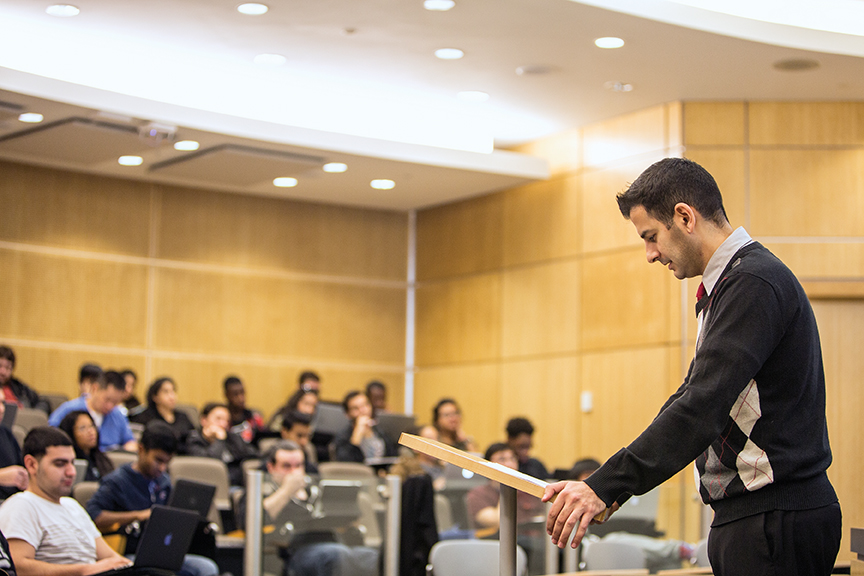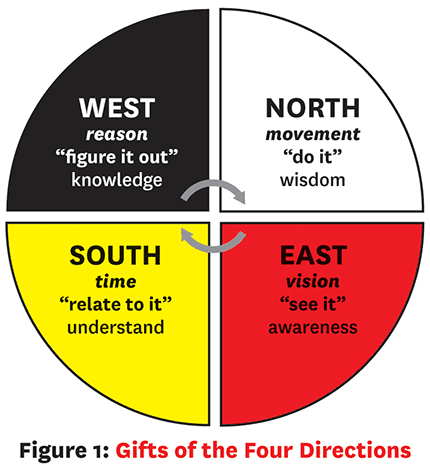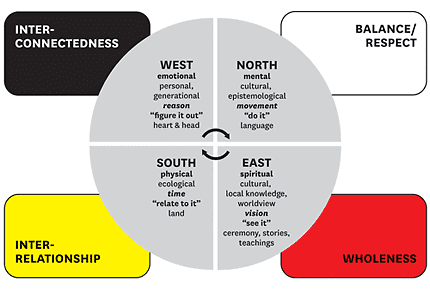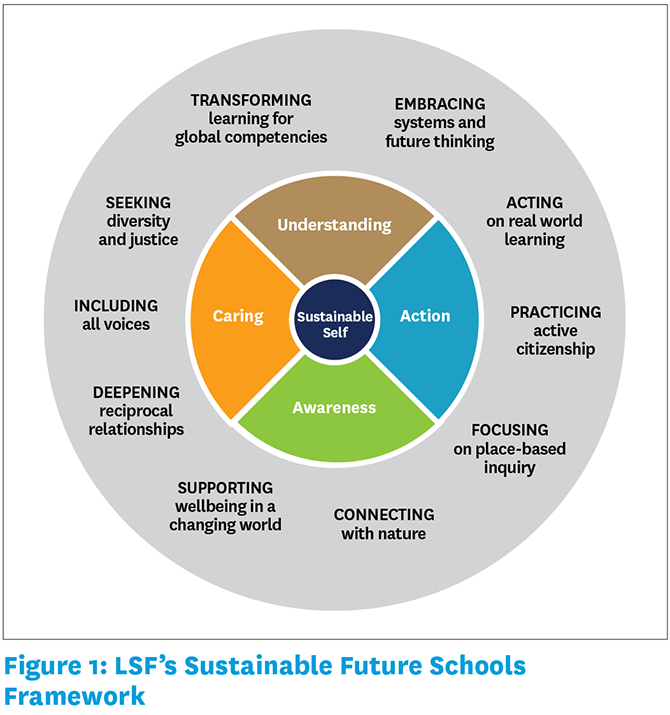
Engaging students in the classroom
Below you will find a curated list of teaching approaches with example classroom activities that can help you frame the infusion of SDGs into lessons. These resources will also give some guidance on how to engage students and achieve learning objectives in the process.
Behaviourist Approach: behaviours are learned through interaction with the environment through conditioning. The belief is that behaviour can be taught through constant repetition of a task combined with positive feedback that encourages and reinforces success.
Examples: guided practice, Q&A, regular review of material, drills, quizzes
Visit the SDG Knowledge Hub to read the behaviourist guest article by Balakrishna Pisupati, Chairperson, FLEDGE.
Community Engaged Teaching Approach: a combination of learning goals and community service to enhance both student growth and the common good. The National Service Learning Clearinghouse states it is “a teaching and learning strategy that integrates meaningful community service with instruction and reflection to enrich the learning experience, teach civic responsibility, and strengthen communities.”
Visit Vanderbilt University's Teaching Guide for 'What is Service Learning or Community Engagement?' by J. Bandy (2011).
Visit Vanderbilt University's Guide for 'Community Engaged Teaching Step by Step'.
Visit the International Association for Research on Service-Learning and Community Engagement.
Cognitive Approach: a focus on the understanding of information and concepts and retention and understanding will increase if students can understand connections between concepts, break down information and rebuild with logical connections. Students are active and fully engaged in the learning process.
Examples: reflections, discussions, experiential learning, sequencing, drawing, mindful walking, approximation and estimation exercises
Collaborative Approach: uses student groups to enhance learning through working together. Groups of two or more learners work together to solve problems, complete tasks or learn new concepts and promote integrative thinking. Every student needs to be engaged and every student has something to contribute in the learning process.
Examples: evaluate a system or process, solve a problem, develop a new product, explain a concept to another group; discussions, activities for matching, ranking or sorting, listening triangles, snowballing, role play, Pro/Con activities, policy development activity
Read about group activities ideas.
Review Ideas for Effective Small-group Learning and Teaching.
Constructivist Approach: knowledge is produced by a learner's value judgements and experiences. Learners find and structure knowledge by associating it with previous experience and knowledge. The act of learning is based on a process that connects new knowledge to pre-existing knowledge. Students learn to learn as they learn. More specifically, there is cognitive constructivism which states that learning should be related to the learner's stage of cognitive development. There is social constructivism that states knowledge develops from how people interact with each other, their culture and society at large.
Examples: role-playing, hands-on activities, simulations, group work, fishbowl
Read the article from the International Journal for Research in Educational Studies titled 'Constructivist Teaching Pedagogy: A Strategy for Innovation, Industrialization and Sustainable Development'.
Review activites to try.
Experiential Education (EE): is a pedagogical approach that involves “the application of theory to a concrete experience, either within the classroom or within the community, which advances the learning outcomes of a course or program and requires students to reflect upon their learning”. For more information visit Experiential Education.
These concrete experiences are often designed to help students explore, connect with, and navigate the world beyond the classroom, encouraging them to make critical connections between what they’re learning and how these ideas might be applied to various contexts and challenges. When integrating the UN SDGs into your courses, facilitating concrete experiences where students can make meaningful contributions to these goals serves a dual purpose: an opportunity to be agents of positive change while engaging in structured, critical reflections to deepen their learning.
These reflective exercises may help to surface important interconnections between the subject matter of the course and its wider applicability to supporting the SDGs, and meaningful engagement with a variety of community organizations & colleagues can build valuable partnerships where learning is a shared goal and progress toward the SDGs is a shared, reciprocal responsibility.
Examples: outdoor and adventure education, non-formal education, place-based education, project-based learning, global education, environmental education, student-centred education, informal education, active learning, service learning, cooperative learning and expeditionary learning.
To learn more about integrating principles and pedagogies of EE into your courses, visit the Teaching Commons website to explore modules called 'Introduction to Experiential Education' and 'Preparing Students for Critical Reflection'.
To learn more about identifying and developing partnerships for meaningful EE experiences, visit the YU Experience Hub website.
For more information, please visit the additional links below
Visit Glendon Experiential Education
Visit University of Windsor Experiential Education
Visit the Association for Experiential Education
Gamification: defined as the application of typical elements of game playing (rules of play, point scoring, competition with others) to other areas of activity, specifically to engage users in problem solving. It can be a way to motivate students by adding elements of games into the classroom with 'levelling up' or 'earning points, coins or badges'.
Examples: discussion boards, quizzes, class response systems like Kahoot, Jeopardy-style games. Read more about Gamification
From Johns Hopkins University's Innovative Instructor Blog, you can read about gamification and why use it in teaching.
From the TeachSDGs Blog is an article titled 'Gamification in Education: Life on Land with Transdisciplinary Approach.
The UNESCO Mahatma Gandhi Institute of Education for Peace and Sustainable Development has adopted a unique ‘infusion’ approach to embedding concepts of peace, sustainable development and global citizenship in core subjects to achieve the 2030 Agenda especially, Target 4.7. This approach is about reorienting core subjects to make them socially and globally more relevant and empowering young people to address local and global challenges with a shared respect for human dignity.
For detailed information visit the Mahatma Gandhi Institute
Inquiry-based Approach: focuses on investigation and problem-solving which begins with scenarios, questions or problems for students to discover the answers. Encourages students to ask critical and creative questions, investigate, interpret and form explanations and arguments. It encourages social interaction, exploration, argumentations, reasoning, and positive attitudes to failure.
Examples: confirmation inquiry, structured inquiry, guided inquiry and open inquiry, create activities that include 1) question, 2) investigate, 3) use evidence to describe explain and predict, 4) connect evidence to knowledge and 5) share findings
From the International Journal of Development Education and Global Learning read Socio- scientific inquiry-based learning.
Visit C3Teachers which aims to empower teachers as they wrestle with the big ideas and instructional implications of the C3 Framework. Teachers play a critical role in helping students learn academic content using the C3 Inquiry Arc, which outlines the social studies habits of mind, disciplinary tools and conceptual content that students need to become ready for college and career, and civic life.
Kolb’s Experiential Learning Cycle: Effective learning is seen when a person progresses through a cycle of four stages. The stages are:
1) having a concrete experience followed by
2) observation of and reflection on that experience which leads to
3) the formation of abstract concepts (analysis) and generalizations (conclusions) which are then
4) used to test a hypothesis in future situations, resulting in new experiences (Kolb, 1984).
In action-oriented learning, learners engage in action and reflect on their experiences in terms of the intended learning process and personal development. The experience might come from a project (in-service learning), an internship, the facilitation of a workshop, or the implementation of a campaign. Action-learning refers to Kolb’s theory of the experiential learning cycle. Action-learning increases knowledge acquisition, competency development and values clarification by linking abstract concepts to personal experience and the learner’s life. The role of the educator is to create a learning environment that prompts learners’ experiences and reflexive thought processes.
Learner-centred Approach: sees students as autonomous learners and emphasizes the active development of knowledge rather than transfer or passive learning experiences. The learners’ prior knowledge as well as experiences in the social context are the starting points for stimulating learning processes in which the learners construct their own knowledge base. Learner centred approaches require learners to reflect on their own knowledge and learning processes in order to manage and monitor them. Educators should stimulate and support those reflections. Learner-centred approaches change the role of an educator to one of being a facilitator of learning processes (Barth, 2015).
Read about Learning-Centred Assessment from the University of Saskatchewan and more from University of Waterloo.
The Medicine Wheel: teaching with the Medicine Wheel is an Anishinaabe framework for Indigenous education. The teachings of the Medicine Wheel can be applied in any educational setting. The fundamental concepts of wholeness, inter-relationship, inter-connectedness and balance/respect are valuable for all.

Dr. Nicole Bell (2014) is Anishinaabe from the bear clan from Kitigan Zibi First Nation. She stated the diagram shows "the gifts of each of the directions as informed by Cree Elder Michael Thrasher. In the east the gift of vision is found where one can 'see'. In the south one spends time in which to relate to the vision. In the west, one uses the gift of reason to figure it out. In the north, one uses the gift of movement to do or actualize the vision." Read Medicine Wheel.

Read The 7 Lessons of the Medicine Wheel by Kelly Beaulieu, an Ojibwa women from the Sandy Bay First Nation situated on the shores of Lake Manitoba.
Read the article Indigenous Leadership in the Sustainable Development Goals by Shaelyn Wabegijig, 2021.
Merrill's Principles of Instruction: this theory relies on the different ways learning can be facilitated. Each phase in the learning process has an important role to play. The approach is task-centred with scaffolding. Learners are gradually introduced to more complex ideas and concepts as the lesson progresses.
There are four phases of learning: demonstration, activation of previous knowledge, application, and integration into real-world challenges.
Read Merrill's First Principles of Instruction: A Synthesis
Read Implementing Merrill's First Principles of Instruction by Dr. My Thi Truong, Professor Dr. Jan Elen and Professor Dr. Geraldine Clarebout in the Journal of Educational and Instructional Studies in the World, May 2019
Visit Instructional Design Australia for an overview of Merrill's Principles.
Problem-based Approach: is a student-centred approach in which groups of students work to solve real-world problems. Through complex and open-ended problems, students learn concepts and principles. This approach can help develop critical thinking, problem-solving and communication skills.
Examples: problems can come from newspapers, magazines, journals, textbooks, television, movies, books; storytelling, end-of-chapter problems or assignments.
From Dr. David Reese of Defined Learning read the blog post Project-Based Learning and the UN SDGS.
Visit the UNSDG Project for PBL and organizations that support PBL and the SDGs.
Socratic Approach: students learn with critical thinking, reasoning and logic. The approach requires students to find gaps in theories and correct them. More questions are asked then answers provided, and the questions are a beginning to further analysis and research. It encourages collaboration and open-mindedness.
Examples: seminars, hot-seat questions, dialogues review a reading, video, lecture or concept
Read A Socratic Approach to Teaching Sustainability journal article.
Systems Thinking: an approach based on the idea that parts of a system will act differently when isolated from their environment than they will in context. This approach calls for looking at the links and interactions between all parts of the system. From Learning for Sustainability, "Systems thinking in practice encourages us to explore inter-relationships (context and connections), perspectives (each actor has a unique perception of the situation) and boundaries (agreeing on scope, scale and what might constitute an improvement)."
Visit the Learning for Sustainability website.
Watch the Systems Thinking YouTube video.
Read How to Easily Apply Systems Thinking in Your Life by Veronika Tietz of Reimagine Sustainability
Transformative Approach: requires students to be active and engaged, to ask critical questions and search for additional information beyond what is stated in the curriculum. It can empower students to see the world differently and through an ethical lens in order to affect change. Learners can adjust their thinking based on new information learned and experienced.
Transformative learning can best be defined by its aims and principles, rather than by any concrete teaching or learning strategy. It aims to empower learners to question and change the ways they see and think about the world in order to deepen their understanding of it (Slavich and Zimbardo, 2012; Mezirow, 2000). The educator is a facilitator who empowers and challenges learners to alter their worldviews. The related concept of transgressive learning (Lotz-Sisitka et al., 2015) goes one step further. It states that learning in Education for Sustainable Development must overcome the status quo and prepare the learner for disruptive thinking and the co-creation of new knowledge.
Examples: oral histories, art exhibits, case studies, connecting with community leaders, field trips, meeting government officials, real-world issues as the context and purpose for learning, and small group work
Read a transformative learning experience journal article.
Universal Design: Universal Design for Learning (UDL) is a framework to improve and optimize teaching and learning for all people based on scientific insights into how humans learn. The 3 principles are Engagement (the Why of learning), Representation (the What of learning) and Expression (the How of learning).
For detailed information visit about UDL
Read Innovating for Inclusive and Equitable Post-secondary Education: A Pathway to Realizing the SDGs.

Outcomes of a Sustainable Future School
- Enhanced and diverse learning opportunities
- Authentic experiences and action-based learning
- Opportunities for students to engage in sustainability projects
- Improved educational outcomes
- Development of informed citizens for future success
- Development of skills, knowledge, and attitudes necessary to create positive changes in the school and/or community.
Ten Elements of Practice
The ten pedagogical elements are cited by research and practice as transformative tools for change. Educators’ depth of understanding and implementation for each practice may vary. Resources and professional learning on each are available and accessible. Teachers can learn independently, or with a teaching colleague, course, local partner, or faculty as a professional learning community.
- Focusing on place-based inquiry: Encourage, through place-based inquiry, a shared respect and responsibility for learning, for each other, and for the land.
- Deepening reciprocal relationships: Develop and sustain school and community practices by collaborating with others. Schools model interdependent, complementary relationships that are connected, balanced, and mutually beneficial. The key to creating reciprocal relationships is a respect and appreciation for the common goal.
- Connecting with nature: Connect all learners to the wonder of the natural world, our interdependence with it, and the skills needed to protect it.
- Supporting well-being in a changing world: Maintain physical and mental well-being to build resilience, emotional strength, and self-care in the face of complex challenges.
- Including all voices: Foster inclusive, collaborative, and equity-centred leadership in schools and community partnerships. Everyone – students, teachers, parents, and local citizens – has a voice.
- Seeking diversity and justice: Show respect for alternative perspectives and diverse ideas; seek to understand and innovate together in the pursuit of social and environmental justice.
- Embracing systems and future thinking: Use systems thinking tools to help students engage with complex questions, leading to sustainable solutions. Including the future as an important voice in all decision-making helps us to “think long” and avoid the problems caused by short-term thinking. This also reflects Indigenous teaching about respect for the land and people, now and in the future.
- Transforming learning for global competencies: Build on a strong foundation of numeracy and literacy. Incorporate the six global competencies to prepare students for a complex and unpredictable future with rapidly changing political, social, economic, technological, and ecological landscapes (UNESCO, 2020).
- Acting on real-world learning: Connect curriculum concepts and knowledge to issues that students have encountered or are likely to encounter in life. This brings relevance, complexity, and motivation to their learning. (Kozak & Elliott, 2012).
- Practicing active citizenship: Through community experiences connected to their learning, inspire the values and build the skills for active citizenship.
Adapted from A Whole-School Approach to Teaching the UN Sustainable Development Goals | EdCan Network
